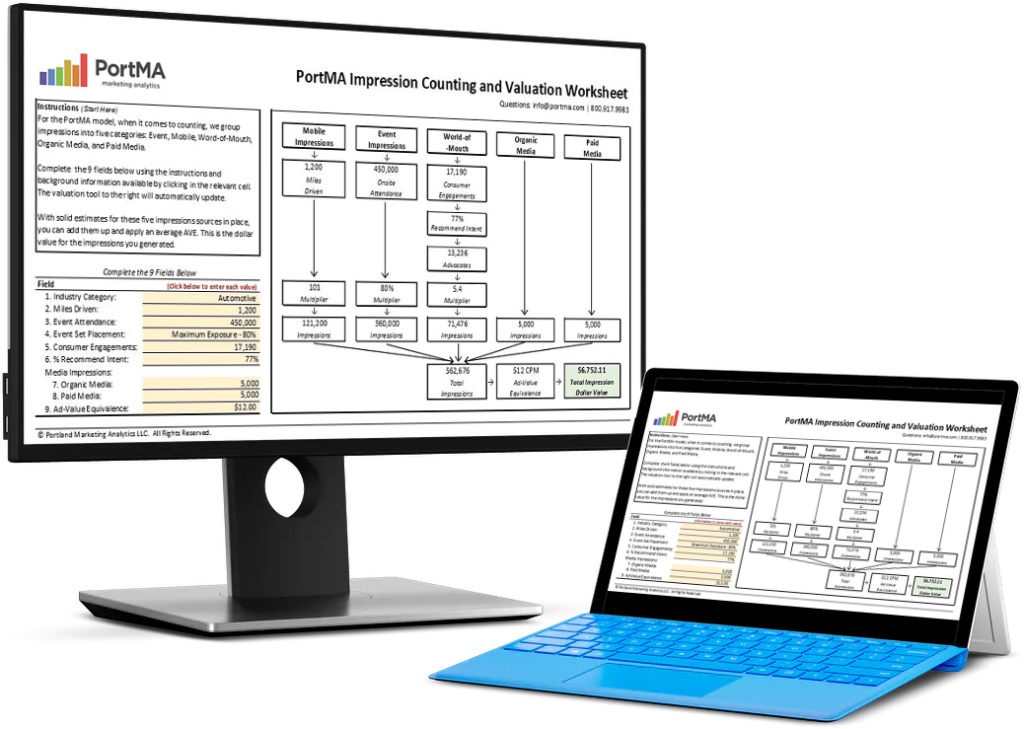
In the first part of this blog, we went through the calculations involved in working out the cost per engagement for experiential marketing. Part two examines two different event marketing activations, one in a retail venue and another at an athletic event.
If you missed Part One, you can find it here.
Estimated reading time: 3 minutes
How Cost per Engagement Differs by Venue
Let us start by looking at a retail activation with a budget of $25,000. In this case, the event ran for 50 days. Throughout this time, one person was on-site for four hours per day. At the end of the campaign, they reported 2,000 engagements.
On the other hand, here is our athletic event. Costs included a $10,000 sponsorship and $6,000 in additional activation expenses, adding up to $16,000. This experiential marketing budget bought your brand five days of activity with ten hours per day. Each day, there were five members of field staff on site. They engaged a total of 5,500 people.
Comparing Hours and Cost
To work out which of those activations delivered more proverbial bang for your buck, we will follow the steps from Part One of this blog and compare staffing hours.
In our retail event, we had 200 consumer-facing hours. The athletic event resulted in 250 hours. Dividing the number of engagements by hours, we end up with ten engagements per hour in our retail context and 22 engagements per hour at the athletic event. A picture is starting to emerge.
Considering engagements per day confirms this picture, but the cost per engagement really clarifies the point. Based on 2,000 engagements and a $25,000 budget, the cost per engagement in retail came to $12.50. The athletic event had a cost per engagement of $2.91.
(You can listen to the full episode of the podcast below.)
From Numbers to Actions
The numbers above may seem obvious. However, it would be premature to drop all retail experiential marketing activity without further analysis.
Marketers may need to consider agreements that exchange shelf space for in-store product support, for example. With that said, understanding your cost per engagement between different venues holds your retail activation to a standard. The question is what you can do to bring the cost per engagement from $12.50 closer to $3?
By considering not only the numbers but also analyzing the rich context around them, you see where you are losing money within the retail event marketing scenario. This is the first step toward making this venue work harder for you.
Cost-Effectiveness
In our example, we started with one person working four hours per day. Was that time the optimal time to reach consumers? Perhaps your campaign would fare better by having more staff during the top-performing two-hour time slot. Deconstructing your experiential marketing campaign like this makes it easy to see where you can optimize.
Measuring cost per engagement is neither hard nor time-consuming. Within a few minutes, these calculations give marketers the information they need to run experiential marketing campaigns more cost-effectively. The data also delivers a solid basis for comparisons between event marketing and other marketing activities. As a result, you have all the information you need to make the case for exciting and efficient activations.

Download the Free Spreadsheet Tool
CALCULATE THE DOLLAR VALUE OF EVENT IMPRESSIONS
PortMA Impression Counting and Valuation Worksheet
Download this spreadsheet and complete the fields for your campaign to get a clear count of your activation impressions translated into a Dollar Value of Marketing
Impression Spreadsheet
